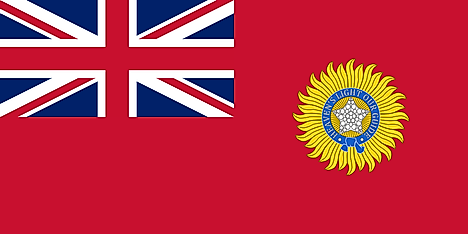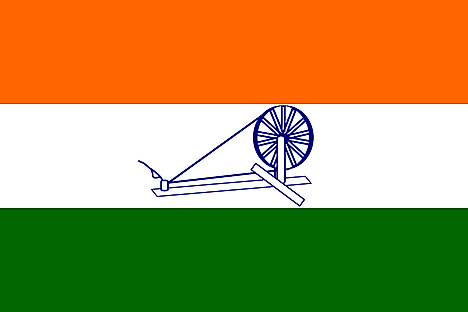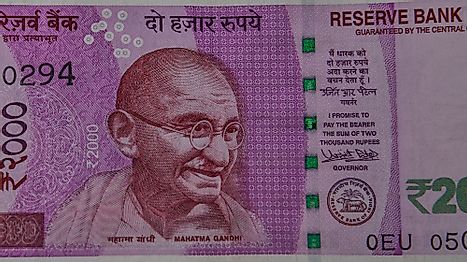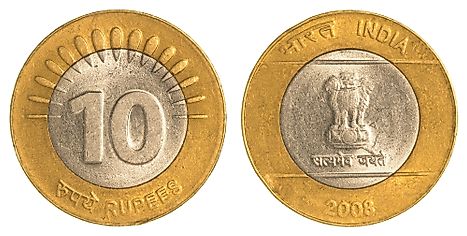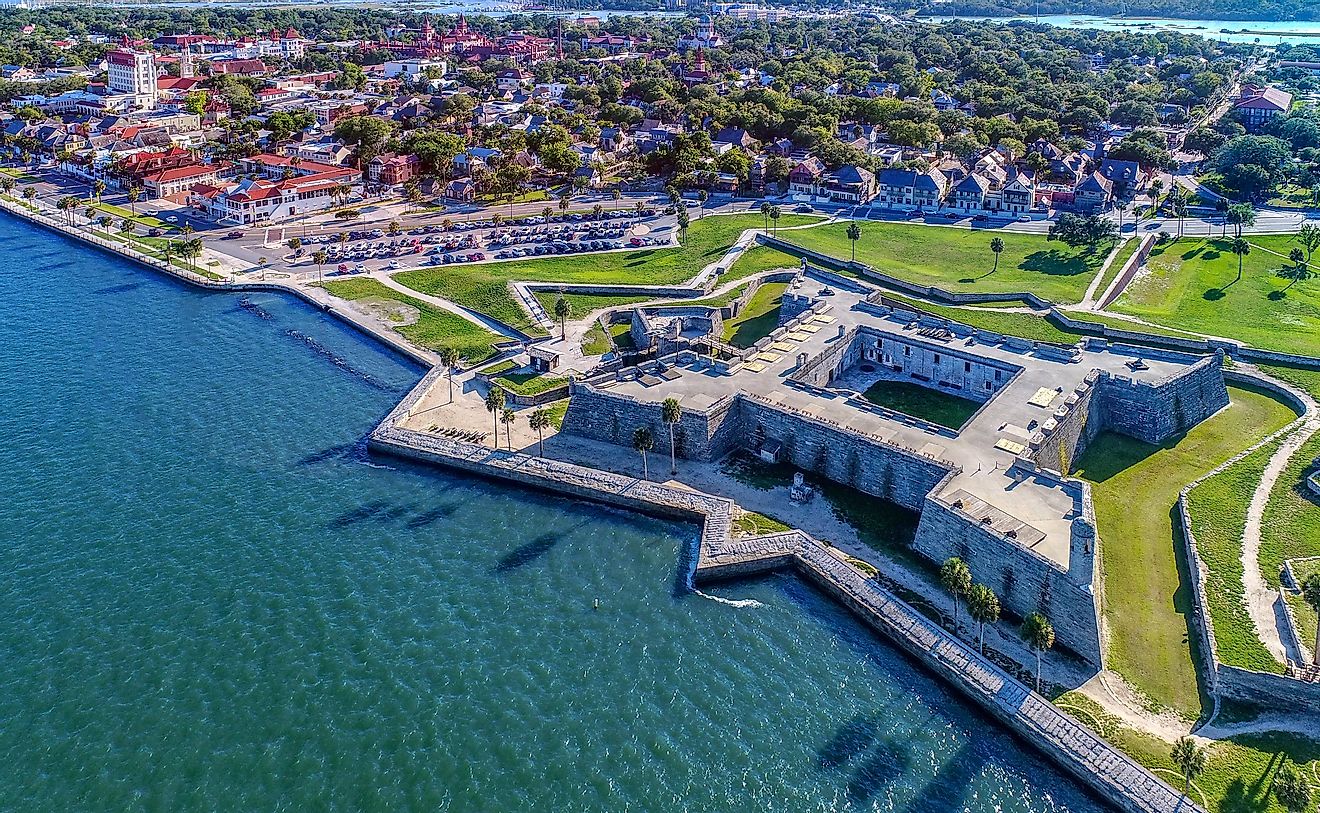Flags, Symbols, & Currencies of India
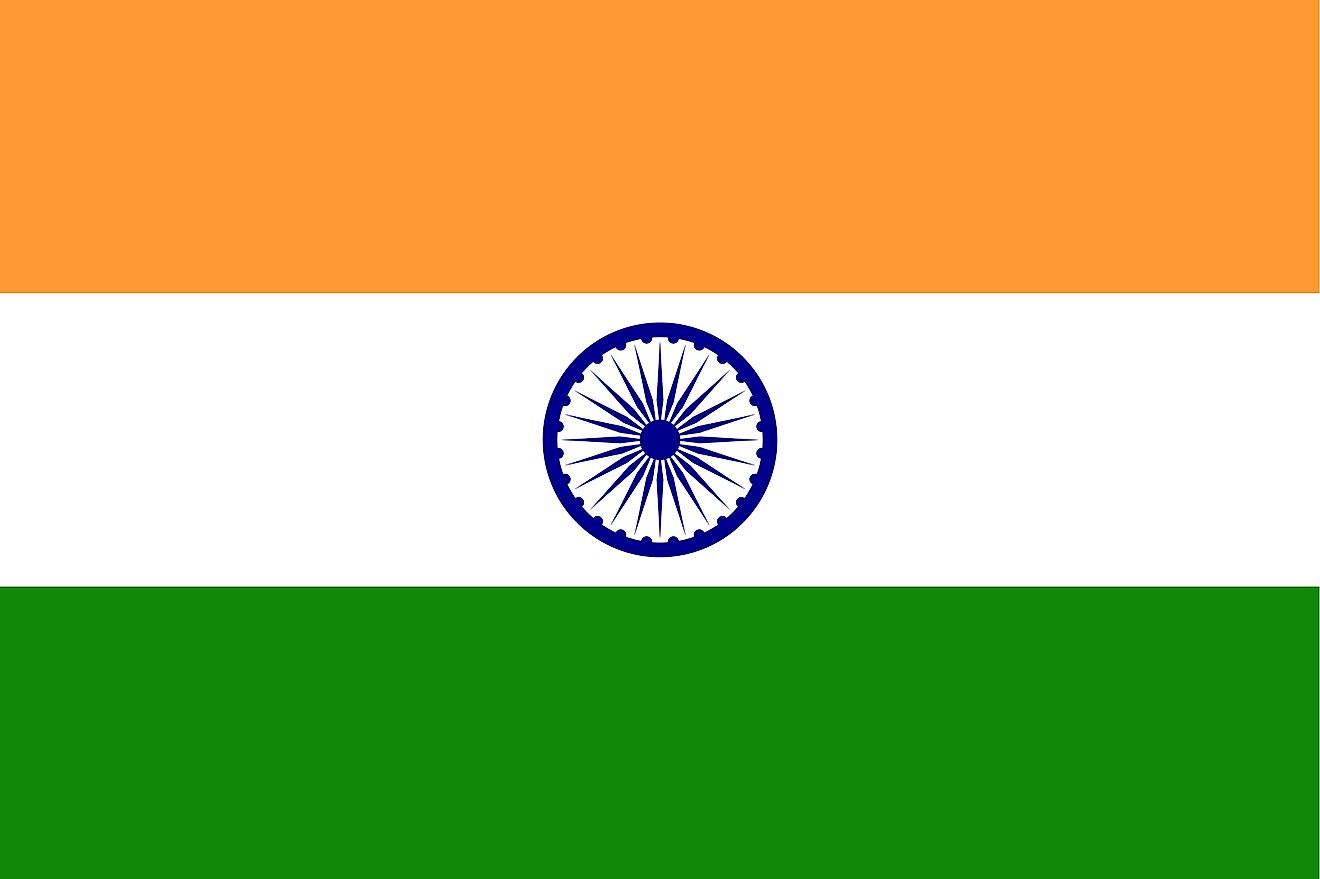
The Flag of India is a national symbol and is locally known as the “Tiranga” which loosely translates to “tricolor” as a testament to the three colors that make up the flag. India adopted its current national flag on July 22, 1947, as the country was about the gain independence from Britain on August 15, 1947.
Description
The Flag Code of India establishes that the National Flag of India should be set on a horizontal rectangle in the proportions 2:3 meaning that the flag’s length should be 1.5 times its width. The flag is made of a triband of the three colors; (arranged from top to bottom) saffron, white, and green with the three stripes being equal in length and width. It is from these three colors that the flag derives its nickname “tiranga” (translated to mean tricolor). The center of the flag is charged with a navy-blue wheel known as the Ashok Chakra which has 24 blue spokes with equally spaced and are spread all around the wheel’s circumference.
Symbolism
The meaning of the three colors which make up the Flag of India is a controversial subject which has spurned numerous theories. One explanation behind the symbolism of the colors is based on the religions found in India. According to this controversial theory, the saffron color being traditionally associated with Hinduism and Buddhism represents the two religions in India while green represents Muslims in the country and white is said to represent other minority religions including Christianity. This theory was first mentioned by India’s second President, President S. Radhakrishnan.
A more widely accepted explanation behind the colors associates the colors to symbolize morals and ethics practiced by Indian people. According to this explanation, saffron represents selflessness and sacrifice expected of political leaders. Saffron can also be said to represent courage and strength of the Indian people. White is said to represent honesty, purity, and peace in the country. White also symbolizes knowledge and light or a path of truth on which the country walks. Green is seen as a symbol of fertility of the earth and can also represent prosperity and growth of the country.
The Ashok Chakra is a navy-blue wheel located at the center of the Indian flag. The Ashok Chakra is inspired by the Hindu symbol; the Dharma Chakra which, according to the Hindu faith, symbolizes that life thrives with the movement or progression of a community but stagnation of movement or progress brings death to the community. Therefore, the Ashok Chakra can be said to represent the progress of the country. The Ashok Chakra is also believed to represent the wheel of law. The 24 equally-spaced spokes inside the Ashok Chakra are said to symbolize the 24 hours in a day. According to Buddhism, the 24 spokes symbolize the 24 elements which make up the human body and the wheel on which the 24 spokes are connected symbolize the self-realization of perfection.
History of the Flag of India
Prior to the Indian Independence Movement, different flag designs were used by different rulers. The idea of having a single Indian flag was brought about by the British after the rebellion of 1857. The first flag of India was based on the heraldic standard and was similar to flags flown in other British colonies. It had a red field defaced with the Union Jack on the upper hoist side and a seal (star of India) on the fly. A discusion to have flag that represented the Indian people gained momentum in the 1920s, with Lala Hansraj proposing a flag with charkha in 1921. The Gandhi's flag, introduced in 1921, was a white-green-red horizontal bands with spinning wheel. However, in 1923, Swaraj flag consisting of orange (top), white, and green horizontal bands with spinning wheel was flown. This flag was adopted as India's national flag in 1931. In 1947, few days to independence, the flag was modified with the Chakra replacing the spinning wheel.
Symbols of India
National Coat of Arms of India

India's coat of arms contains four Indian lions facing diffeent directions and standing on a wheel, known as the Ashoka Chakra (which represents truth and honesty). The four Asiatic lions symbolize courage, power, confidence, and pride. The Chakra wheel is located between a bull and horse. Below the arms is India's motto written in Sanskrit: Satyamev Jayate, a revered saying in the ancient language, which translates to, "Truth Alone Triumph."
National Anthem
- Anthem Title: Jana Gana Mana (Thou Art the Ruler of the Minds of All People)
- Music composer and Lyricist: Gurudev Rabindranath Tagore
- Date of Adoption: January 24, 1950
The national anthem of India, Jana Gana Mana, was adopted as the country's official anthem on January 24, 1950, by the Constituent Assembly of India. The song was originally composed in Bingali as Bharoto Bhagyo Bidhata by Gurudev Rabindranath Tagore in 1911. The poem was recited publicly for the first time in 1911 in Kolkata during the annual congress of the Indian National Congress. Jana Gana Mana was used as the unofficial anthem of India in several occassions before it was adopted as the country's national anthem in 1950.
जन-गण-मन (Hindi)
जन-गण-मन अधिनायक जय हे
भारत भाग्य विधाता!
पंजाब-सिंधु-गुजरात-मराठा,
द्राविड़-उत्कल-बङ्ग
विंध्य हिमाचल यमुना गंगा, उच्छल जलधि तरंग
तव शुभ नामे जागे,
तव शुभ आशिष मांगे
गाहे तब जय गाथा।
जन-गण-मंगलदायक जय हे
भारत भाग्य विधाता!
जय हे! जय हे! जय हे!
जय जय जय जय हे!
Thou Art the Ruler of the Minds of All People" (Jana Gana Mana)
Thou art the ruler of the minds of all people,
Dispenser of India's destiny.
Thy name rouses the hearts of Punjab, Sindh,Gujarat and Maratha,
Of the Dravida and Odishaand Bengal;
It echoes in the hills of Vindhya and the
Himalayas,
Mingles in the music of Ganga and Yamuna
and is chanted by
The waves of the Indian sea.
They pray for thy blessings and sing thy praise.
The saving of all people waits in thy hand,
Thou dispenser of India's destiny.
Victory, victory, victory to thee.
The Currency of India is the Indian rupee
The currency which circulates in India is the Indian rupee. The rupee derives its name from ‘rupiya,’ which was a silver coin released in the 16th century by Sultan Sher Shah Suri. The rupee contains 100 paise, although 25 paise is no longer regarded as legal tender. The Reserve Bank of India controls the disbursement of the rupee.
Modern Coins
The initial rupee coins minted in the independent India were released in 1950. These coins consisted of 1 pice, 1/2, one, and two annas, as well as 1/4, ½, and one rupee denominations. These series were followed by the decimal issues introduced in 1957. The first issue featured 1, 2, 5, 10, 25, and 50 naye paise in addition to 1 rupee. The term naya was dropped in 1964. India's coins have undergone changes over the years, and the 1, 2, 5, and 10 rupees are the most common in circulation. The government is in control of five mints at NOIDA, Mumbai, Cherlapally, Saifabad, and Alipore. The government released coins featuring the prints of Indian religious and historical figures and statesmen post-independence. Commemorative coins have been released in India, such as the 100 coin released to mark the 100th anniversary of Mahatma Gandhi's homecoming.
Banknotes
The Indian government disbursed its first paper currency in 1861. The colonial designs were done away with in the post-independence period. The Mahatma Gandhi series of 5, 10, 20, 50, and also 100 rupees is the current series in circulation. The 500 and 2,000 rupee denominations are included in the Mahatma Gandhi New Series. Printed on the banknotes is a Mahatma Gandhi portrait. The Lion Capital Series consists of the denomination of one. India's central government adopts the design of banknotes upon advice from the Reserve Bank's central board.
Historical Currencies of India
By the 6th century BCE, medieval India was using coins. During the governance of Sultan Sher Shah Suri from 1540 to 1545, he oversaw the issue of silver coins termed rupiya. The silver coin continued to circulate through the Mughal period, Maratha era, and in British India. Paper rupees were subsequently introduced by the Bank of Hindustan, the Bengal Bank, as well as the General Bank of Bengal and Bihar. The rupee was severely devalued in the 19th century, when the discovery of vast silver deposits in some European colonies and the United States led to the devaluation of silver in comparison to gold. The British failed to de-popularize the rupiya in place of the British sterling pound and gave the rupee official status in India after the revolt of 1857. The portrait of King George VI was printed in place of earlier designs and Queen Victoria's portrait was adopted in 1862. The Reserve Bank of India began operating in 1935 with the task to distribute rupee notes. India's monetary system was reformed in the post-independence era.
